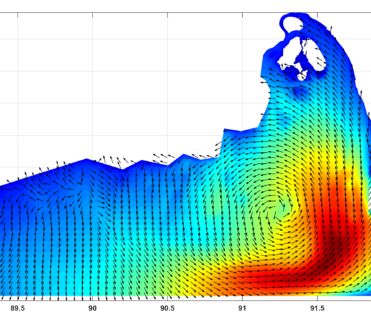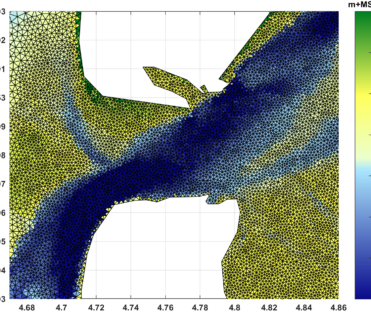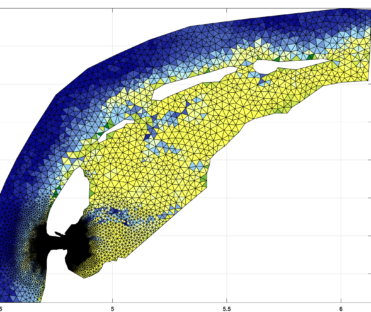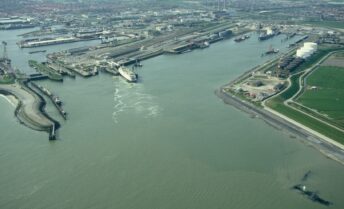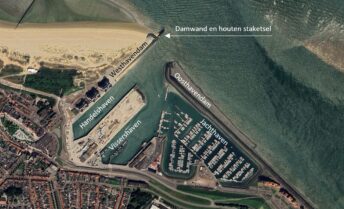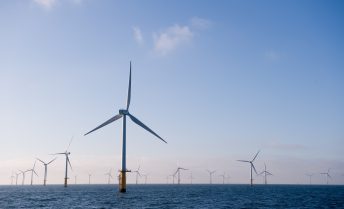SWAN
SWAN (“Simulating WAves Nearshore”) is a two-dimensional numerical spectral wave model for simulating two-dimensional wave fields in coastal and inland waters. SWAN is an open-source model developed by TU Delft and is globally used for wave simulations.
The SWAN model incorporates a wide range of physical processes, such as wave growth due to wind, shoaling and refraction due to flow and depth, non-linear wave interactions, white-capping, bottom friction, reflection and transmission through obstacles and wave breaking.
With this, SWAN is capable of providing one- or two-dimensional wave spectra at desired output locations, along with the spatial and time-dependent distribution of numerous parameters like significant wave height, various wave period measures, wave direction, and directional spreading. Therefore, SWAN is highly suitable for determine hydraulic boundary conditions and metocean studies.
Svašek Hydraulics has been actively involved with the software since the early years of SWAN. Thanks to this years-long expertise, we are often engaged in official boundary condition studies and model setups for various purposes, including, the Legal Assessment Instrumentation (WBI) of Rijkswaterstaat. We also work for local water bodies such as the Eastern and Western Scheldt, and for ports within the Hydraulic Loads in Ports (HB Havens) program. Furthermore, we apply SWAN worldwide, like computing long-term wave climates at different locations (including the distinction between sea and swell waves).
The flexibility and accuracy of SWAN have led Svašek Hydraulics to integrate the software online with our in-house hydromorphodynamic model FINEL. This allows for the calculation of wave-driven flow and sediment suspension by waves, determining the resulting morphological changes and wave conditions.
learn more about our waves and swan modelling?
Please contact Marloes van de Boomgaard
Marloes van den Boomgaard
Project engineer

RELATED PROJECTS


